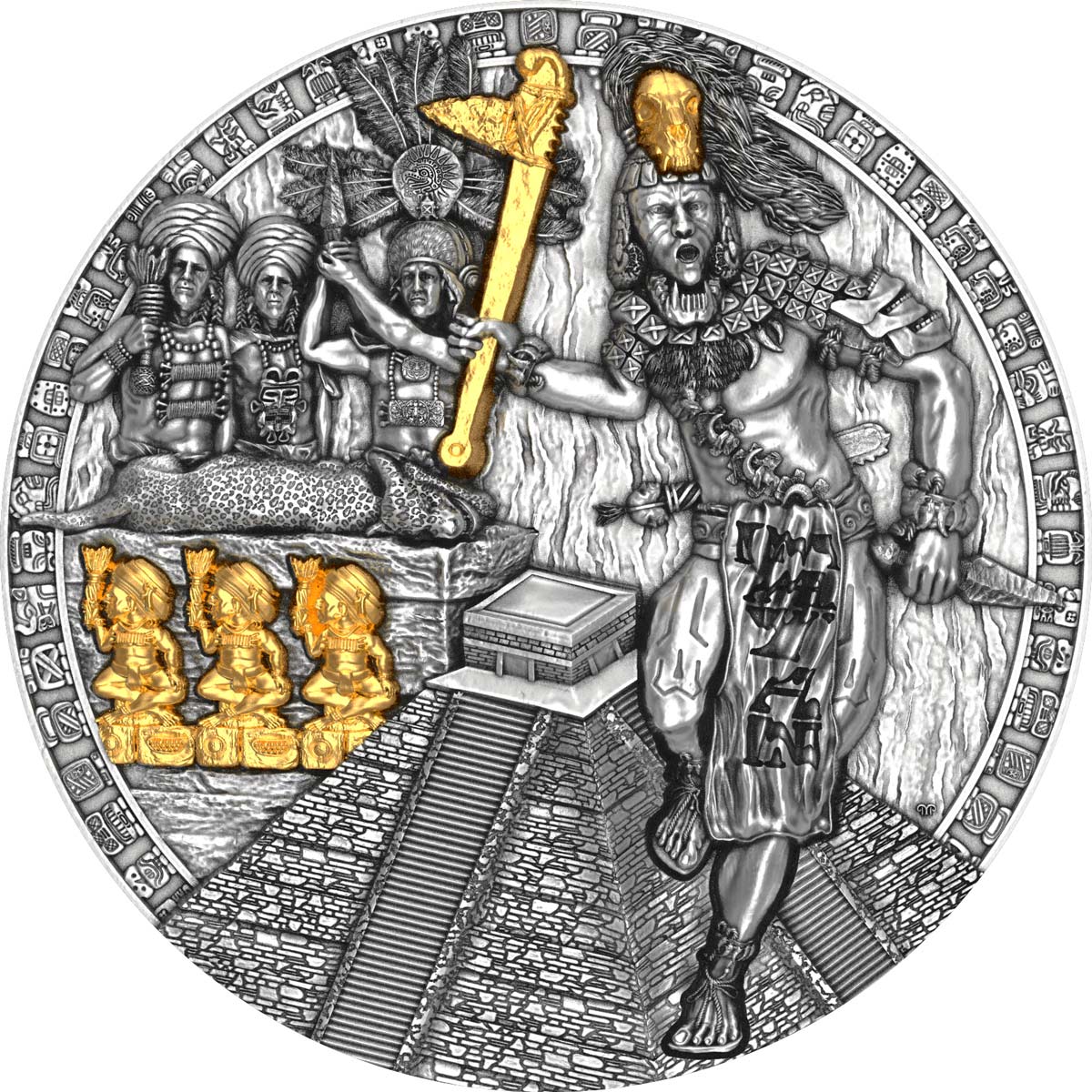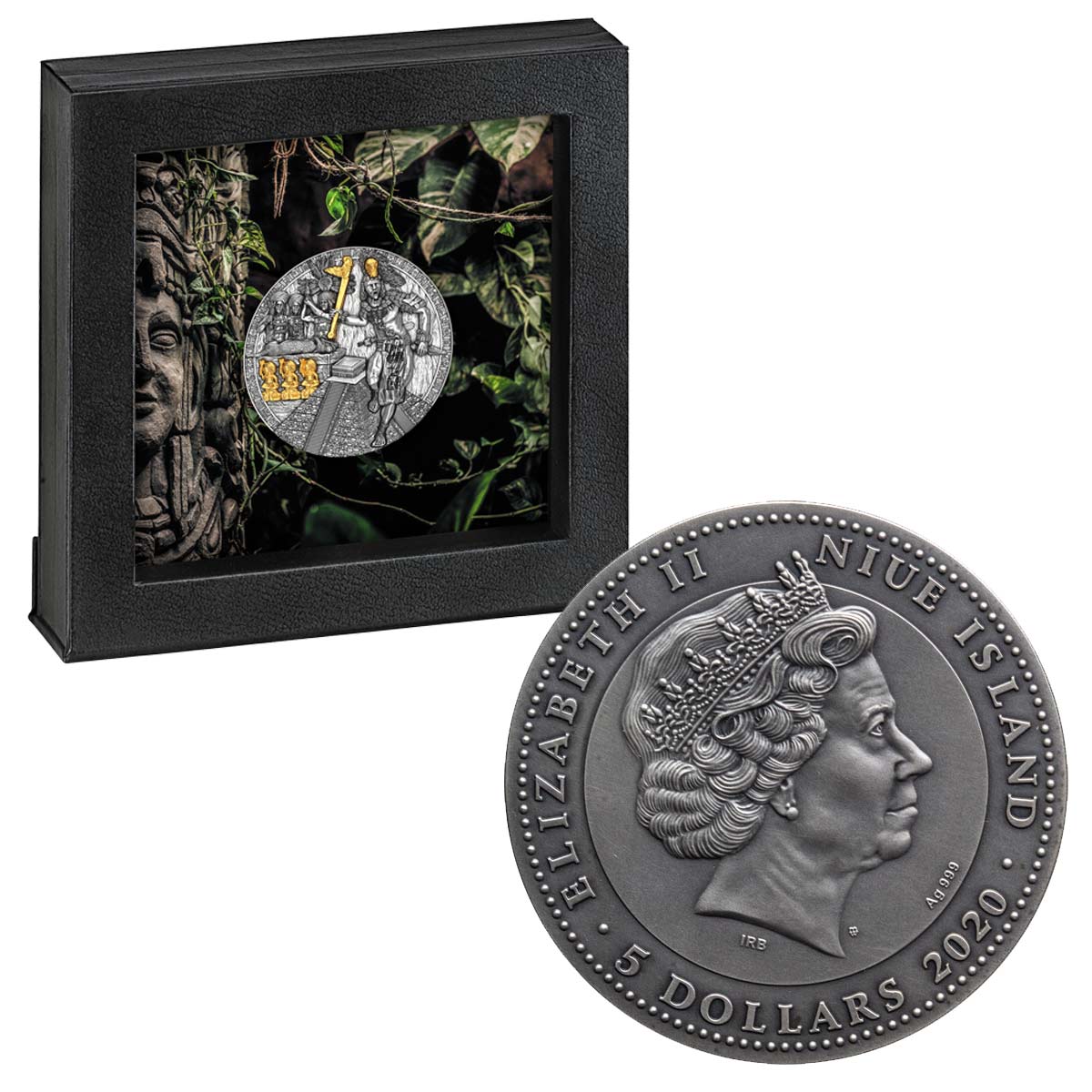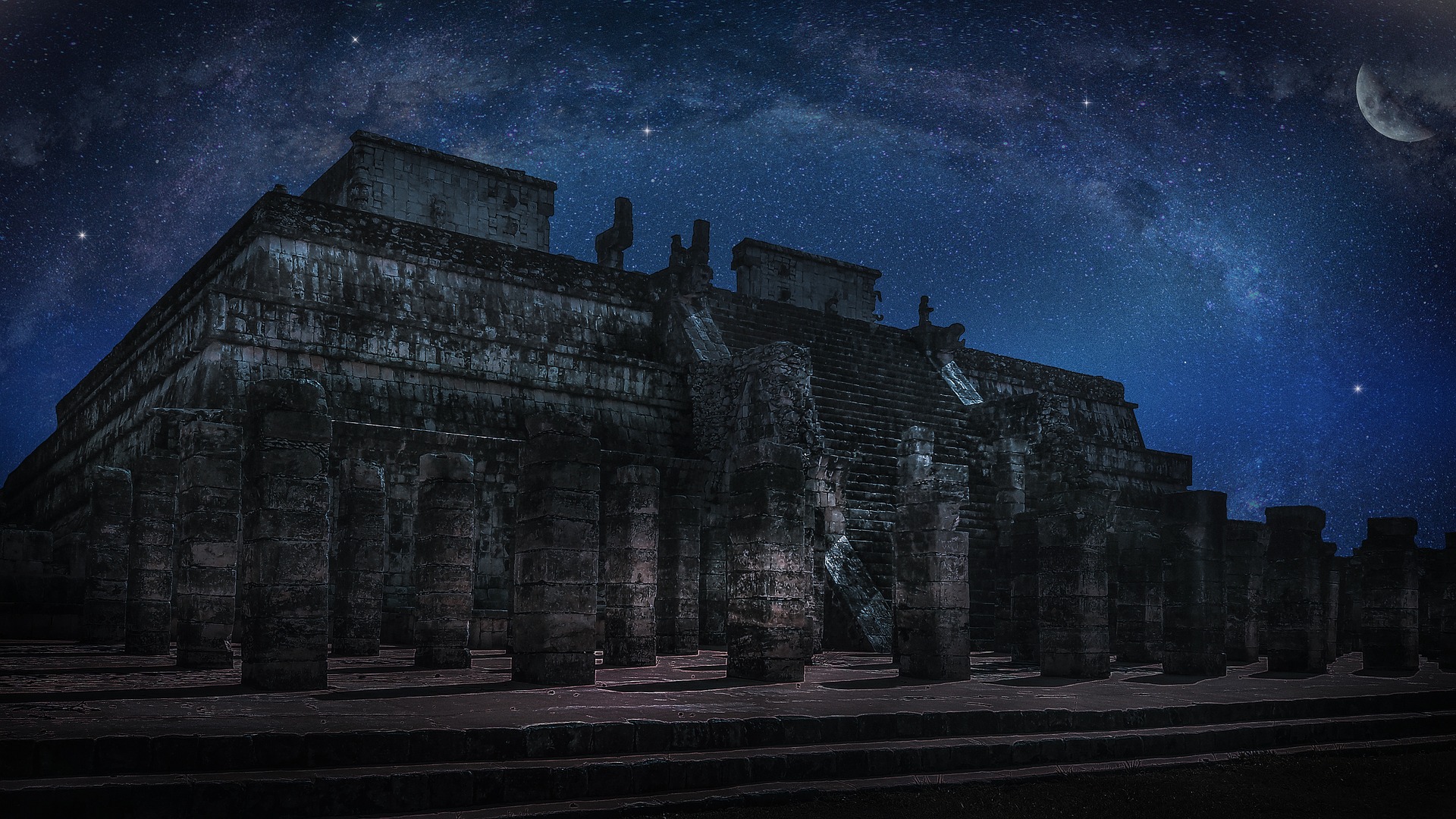After the Samurai comes the Mayan Holcan Warrior in the Mint of Poland’s military history coin series
Most of the Mint of Poland’s much admired 2oz silver coins themed around the ancient world are distributed by a small core of dealers around the world, but they do issue a few of them by themselves. One such example was the Samurai design that hit the shelves earlier this year, and now the time has come to add a second issue to the series.
Looking at some of histories greatest warrior classes, these coins employ much of the design and format expertise from their other ranges, but seemingly with a less ambitious artistic style. Certainly, the obverse faces are devoid of anything in the way of customisation, employing a standard effigy of Queen Elizabeth II, so this coin, likes its forebear, relies solely on the reverse face to differentiate itself from the mass of competition emanating within the mints own ranks.
The style is different. Rather than a fixed scene, the Mayan Holcron warrior depicted here is part of a collage of different elements from this ancient Mesoamerican civilisation.. A Mayan sacrificial temple, priests and figurines are all placed together to form a themed composition. Each of the individual pieces is well done and the use of gilding has been undertaken with restraint, but we don’t feel this is as impressive of some of their other series. That doesn’t mean we don’t like it – far from it – but it’s a good rather than great release.
Packaging is neat. The latex floating frame is back in action with a nice themed insert, so display isn’t a problem. At 50mm in diameter, there’s lots of space for the design to hold plenty of visible detail, and the contrast between the gilding and the antique finishing is always pleasant, Available to pre-order now, it should start to ship in around three months time and has a mintage of 500 pieces.
MAYAN WARFARE
Although the Maya were once thought to have been peaceful, current theories emphasize the role of inter-polity warfare as a factor in the development and perpetuation of Maya society. The goals and motives of warfare in Maya culture are not thoroughly understood, but scholars have developed models for Maya warfare based on several lines of evidence, including fortified defences around structure complexes, artistic and epigraphic depictions of war, and the presence of weapons such as obsidian blades and projectile points in the archaeological record. Warfare can also be identified from archaeological remains that suggest a rapid and drastic break in a fundamental pattern due to violence.
Maya polities engaged in violent warfare for political control of people and resources. Some scholars have suggested that the capture of sacrificial victims was a driving force behind warfare. Among the most critical resources were water and agricultural land. Economic control of resources such as obsidian also increased competition among polities. As polities became more successful, they also became more complex. This led to improved efficiency in acquiring and holding valued resources, especially through military force. Population growth increased the competition between polities, resulting in increased levels of violence.
Warfare was likely a driving force of cultural change. Although warring leaders undoubtedly benefited materially, one of the main goals may have been to acquire sacrificial victims. Sacrifice not only legitimized the ruler by intimidating rivals and awing the citizens, but was also associated with concepts of sacred fluids and the passage of time. Warfare is alluded to in to the mythology of the Popol Vuh, which describes sacrifice through decapitation. Certain events such as the death of a leader or birth of an heir may have required sacrifice.
Little can be known about how the ancient Maya planned and coordinated their attacks. However, it has been noted that the Maya cities kept some distance between themselves and their enemies with an estimated mean distance of 55 km (about two to eight day’s travel) between major settlements. This may support the theory that war was fought by and for elites; that is, the Maya and non-Maya nobility. This may be because of the long distances that had to be travelled between cities. One estimate puts about 500-1000 men on the battlefield on each side of the conflict at maximum based on estimates about the logistics of the journey, such as amount of weight carried and how much food was needed on the journey.
It is thought that enemies would project missiles at long range, then as they advanced on each other, discipline probably declined, allowing individuals to attempt to personal feats of bravery. The main body of the population does not appear to have been active in most conflicts unless it involved the overthrow of a ruler. Military organization is somewhat unclear. Leadership seems to have been embodied mostly in the Halach Uinik, the ajaw or lord of each geopolitical unit, known as a batab.
Although the Maya had projectile technology, such as the atlatl and spear, much of the actual fighting was done at close range with “thrusting, stabbing, and crushing”. Weapons were crafted mostly from obsidian and chert, obsidian being the sharpest (but more brittle). Knapping chert or obsidian into bifacial projectile points and attaching them to atlatl darts, spears, and arrows was the dominant technology. Although bows and arrows were used, spears and Macuahuitl remained much more common. As well, chipped flint was common in close range combat knives.(Source: Wikipedia)
| SPECIFICATION | |
| DENOMINATION | $5 NZD (Niue) |
| COMPOSITION | 0.999 silver |
| WEIGHT | 62.2 grams |
| DIMENSIONS | 50.0 mm |
| FINISH | Antique |
| MODIFICATIONS | High-relief, gilding |
| MINTAGE | 500 |
| BOX / C.O.A. | Yes / Yes |






Leave A Comment